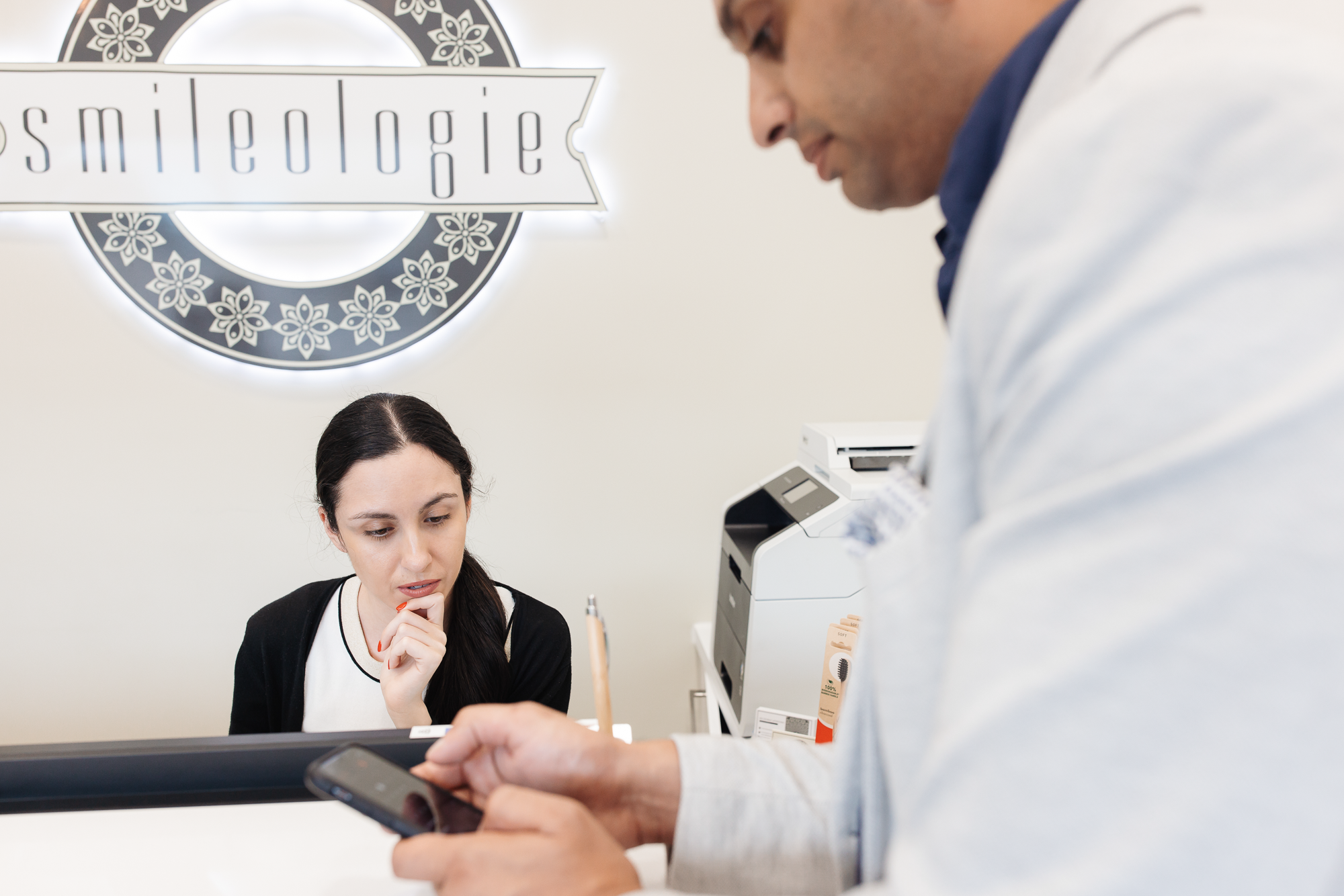Step One: Assessment
Your dentist will typically take x-rays and an OPG when wisdom teeth are present. This is to get a better idea of their location, angulation, and size before any wisdom teeth removal is suggested.
This step is important as removing wisdom teeth can impact the rest of your mouth, including moving nearby teeth and changes in inflammation. Your dentist wants to be sure they have all of the details before they recommend wisdom tooth removal.
After gathering a more comprehensive dental history, we then assess the condition of your wisdom teeth and discuss whether removal is necessary or if alternative treatments are available.
Step Two: Pain Management and Anaesthesia
When it comes to wisdom teeth removal, patients have various options for pain relief. For some, local anaesthesia is enough to numb the area and make the procedure comfortable. The type of anaesthesia used is often based on patient preference, and we will answer any questions you have before the surgery.
No matter your preference, we will work with you to ensure you are as comfortable as possible throughout the entire wisdom teeth removal procedure.
Step Three: Extraction of the Wisdom Teeth
Whether we are removing a single wisdom tooth, or you are having all four wisdom teeth removed, we begin by numbing the area around the tooth and then making an incision in the gum tissue.
To do this, the wisdom tooth is carefully extracted from its socket, and in some cases, it needs to be broken into smaller pieces before being taken out. To complete the process, any bone that was impacted by the wisdom tooth may need to be gently taken away as well.
The incision will then be closed with stitches, and we place a sterile gauze pad on the socket to help allow a blood clot to form. You will then be given instructions for care following the procedure.
Step Four: Post-Wisdom Tooth Removal Care
Be sure to follow your dentist’s instructions for care after the procedure. With proper care and healing, you’ll be back to your usual self in no time. One of the most important things to do after having your wisdom teeth removed is to take good care of the extraction sites.
- Avoid hard or crunchy foods
- Staying hydrated with lots of water
- Take any medications as prescribed
- Keep the extraction site clean
- Avoid touching the extraction sites with your tongue or fingers
- Limit physical activity for a few days
- Keep your head elevated when lying down
- Use ice packs or cold cloths on the swollen area to reduce swelling and discomfort
- Finally, salt-water rinses can help to reduce any discomfort you’re feeling.
By following these simple instructions, you can help ensure a quick and successful recovery.
Step 5: Post-Operative Review
At your post-operative appointment after removing your wisdom teeth, the doctor will do a full assessment to make sure the healing process is progressing as it should.
The stitches put in place during surgery should have dissolved on their own, but your dentist will still check the site to ensure everything is running smoothly.
Taking good post-care of this procedure is key at this stage, so please let us know if you feel any pain or discomfort as we monitor your healing progress.


